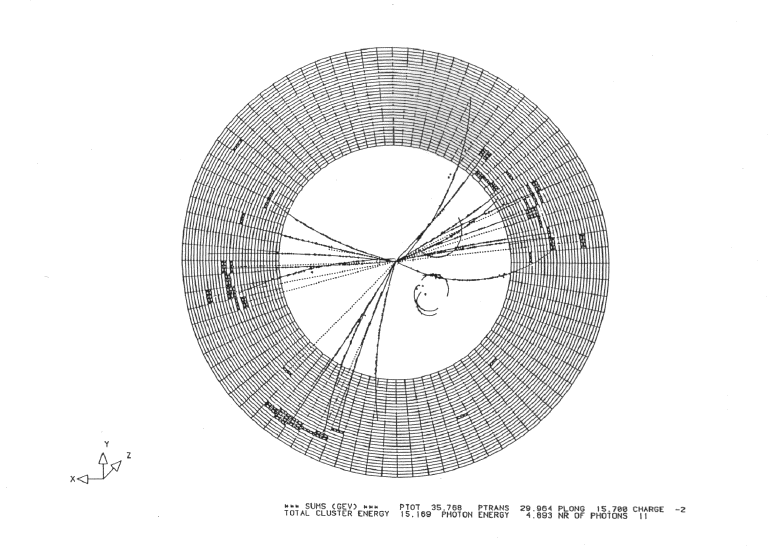
Gluons mediate the strong interaction just as photons (electromagnetic waves) mediate the electromagnetic forces. Quantum chromodynamics (QCD), the theory of the strong interaction, predicts gluon emission by quarks analogous to photon emission by electrons.
A quark-antiquark pair created at high-energy electron-positron annhilations, convert into two collimated bundles ("jets") of particles outgoing in the opposite directions. If a gluon is emitted by one of the quarks, it also converts into a jet, resulting in a three-jet pattern (See the above picture).
At the 1979 Lepton-Photon Conference, held at the Fermi National Accelerator Laboratory, USA, all the four Collaborations at PETRA reported convincing independent evidence for an admixture of three-jet topologies (presentations were made by S. Orito for JADE, H.B. Newman for MARK-J, Ch. Berger for PLUTO, and G. Wolf for TASSO).
QCD also predicts gluon emission by gluons themselves, which leads to events with four-jet topologies. This so-called gluon self-coupling was harder to study at PETRA and required higher energy colliders such as KEK's TRISTAN and CERN's LEP machine.